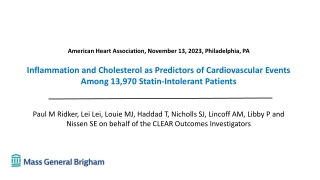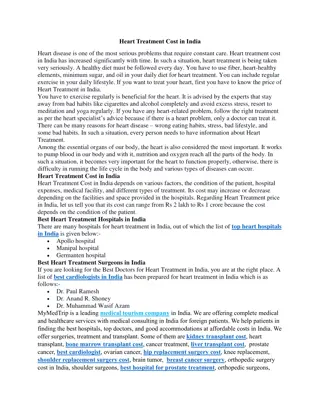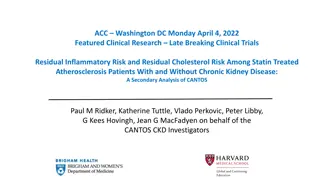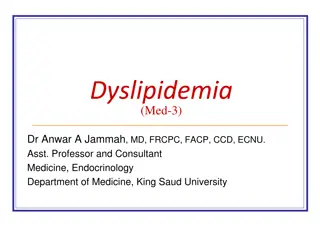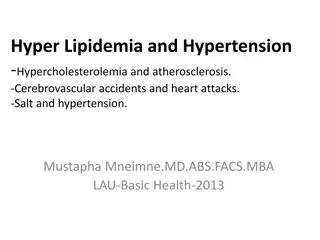Boosting HDL Cholesterol for Heart Health
Cholesterol levels, specifically HDL or "good" cholesterol, play a vital role in heart health. Learn how to increase HDL levels, understand its function, and why HDL analysis is crucial in assessing the risk of heart disease.
Download Presentation

Please find below an Image/Link to download the presentation.
The content on the website is provided AS IS for your information and personal use only. It may not be sold, licensed, or shared on other websites without obtaining consent from the author.If you encounter any issues during the download, it is possible that the publisher has removed the file from their server.
You are allowed to download the files provided on this website for personal or commercial use, subject to the condition that they are used lawfully. All files are the property of their respective owners.
The content on the website is provided AS IS for your information and personal use only. It may not be sold, licensed, or shared on other websites without obtaining consent from the author.
E N D
Presentation Transcript
AL-Mustaqbal University College Medical laboratory Techniques Department Clinical Biochemistry (HLD Cholesterol) Lecturer : M. Sc. Salam Mohammed Naser
HLD Cholesterol HDL: How to boost levels of "good" cholesterol? Cholesterol levels are an important indicator of heart health. For HDL or "good" cholesterol, higher levels are better. HDL cholesterol is known as the "good" cholesterol because it helps rid the bloodstream of other forms of cholesterol. Higher levels of HDL cholesterol are associated with a lower risk of heart disease. Cholesterol is a waxy substance found in all cells of your body that performs many beneficial functions, including helping build body cells. And this substance travels through your bloodstream, attached to a type of protein. This type of protein is called: lipoproteins.
HDL analysis Is used to detect the percentage of high-density lipoprotein, short for HDL, in the blood, which is a type of cholesterol that plays a role in protecting against heart disease, as it helps to get rid of other harmful types of cholesterol In the blood and preventing it from accumulating arteries, so it is known as good cholesterol, and as a result of the high density of cholesterol in this type of lipoproteins compared with other types of lipoproteins it is called the term high density lipoprotein, which is a microscopic ring of lipoproteins that contain Cholesterol is at its center. inside the
HLD Cholesterol function Removing felled cholesterol particles from the blood. Transferring harmful cholesterol particles to the liver to be broken down and recycled for reuse. Maintaining the integrity of the blood vessels, which helps prevent atherosclerosis, and thus prevent heart attacks and stroke.
The ratio of complete cholesterol to the ratio of HDL This percentage can be calculated by dividing the total cholesterol value by the value of the beneficial cholesterol, and in the event that the index value increases, the risk of these diseases increases.
Why is HDL analyzing Performed? To determine the risk of developing heart disease, including the following people: Diabetics. A family history of heart disease. Patients with blood pressure. Men over the age of 45 and women over the age of 55. Smoke.
Laboratory devices and tools 1- Spectrophotometer 2- Centrifuges 3- Water bath 4- Micropipettes 5- Tubes, cups, cuvettes, tourniquet, syringes ,cotton, plain tubes, yellow and blue tip s 6-kit HDL-CL
- Procedure: 1- Take the blood from the person. 2- Centrifuge the blood to gets the serum. 500 L of serum or plasma and 500 of precipitation (Supernatant) 3-The additions as in the shown Table(1): Blank Standard Test Reagent (R1) 1 mL 1mL 1mL Standard (R2) ----- 50 L ----- Serum(Supernat ent) Distill water ----- ----- 50 L 50 L ----- -----
- Procedure: 4-Mix well and let for 5 minutes at 37 C or 10 minat room temperature. 5- Read the absorbance for standard and test against the blank at wave length 550 nm.
Calculations:- Con. of test = (A )of test/ (A)of standard) *Con. Of Stad.(100 mg per 100 ml)
Normal value:- Cholesterol levels are measured in milligrams of cholesterol per deciliter of blood or millimoles per liter. When measuring HDL cholesterol, the higher the number, the better the condition. At Risk Desired Level <40 mg / dL (1.0 mmol / L) 60 mg / dL (1.6 mmol / L) or more Men less than 50 mg / dL (1.3 mmol / L) 60 mg / dL (1.6 mmol / L) or more Women


